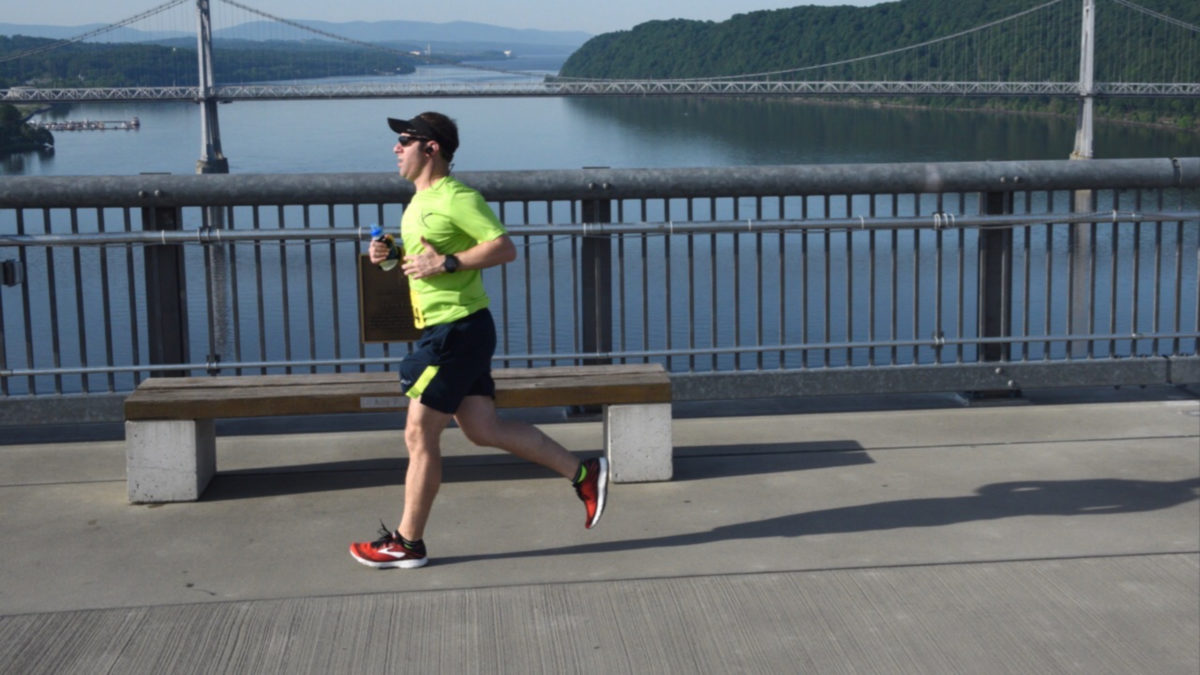
Training For Success
June 12, 2019
Beat Training Burnout
June 23, 2019Learn To Run
 Well folks, it looks like we may be able to get outside a bit in the next coming weeks. The rain is slowing, and my yard no longer looks like a swamp. I hope you are all enjoying this break in rainy weather!
Well folks, it looks like we may be able to get outside a bit in the next coming weeks. The rain is slowing, and my yard no longer looks like a swamp. I hope you are all enjoying this break in rainy weather!
With that being said, I know a lot of you may be questioning this whole, “running” thing and are telling yourself, “I’ll start tomorrow.” I know the thought of running for exercise is scary, especially if you’ve never done it before. So, I’m here to give you a few pointers to make life a whole lot easier if you do decide to join the “runners club.” Remember, we can all run- it’s a natural instinct especially when you are surprised by that unexpected critter walking down the street.
The first thing I want to say is that it is not impossible! I just finished my stint as the co-technical director for the Dutchess County Chamber of Commerce’s Learn to Run Program. This past Tuesday, our running students finished their program by running one mile! Many of them had never run in the past and guess what, they made it! So, with that little bit of inspiration, here are some bits of knowledge.
Ladies and Gents, if your idea is that you just want to run for exercise but are 100% dreading it, give it a shot. Remember, if you don’t fall in love and catch the runners high, there are other things you can do to get in shape! Walking, hiking, biking, resistance training, etc. are all great ways to get yourself moving. If you’re not cut out to be a runner, don’t let it get you down. It will all be okay!
So, for my “new to running” crew, here are some thoughts for all of you:
Seeing a physician prior to starting a new activity is a good idea! If you haven’t had a “check-up” in “a while” it may be time to see your primary care physician. A baseline health status is always good to have prior to starting a new activity. Prior to running, it’s important to make sure your cardiovascular system is in working order to respond to the stresses of the activity! Also, I’m a supporter of yearly physicals just to make sure all is well in your body. Also, seeing a physician prior to a program can help monitor the gains you’ve made in your running program. How? Monitoring cholesterol, heart rate, respiratory rate, weight, etc.!
We all need a baseline level of fitness to start a running program. Folks, if you think that you’re going to get up and do a 5K training program with minimal ability to tolerate a short walk or the inability to get out of a chair without your arms, we may have to re-think your initial goals! A good cardiovascular and strength foundation is needed to be successful in a running program. What I often tell people, is running is a series of single limb hops performed repeatedly. Think about how much strength and power that takes! Prior to starting a running program, I recommend being able to walk continuously for 20-30 minutes at a time with intermittent bouts of a change in pace! I also recommend being able to perform the following when first starting a running program: balance on one leg x 10 seconds, perform a single leg heel raise x 10 (bilaterally), squatting to chair without the use of arms ( x 20), jog in place ( x 1 minute), Bridge( x 1 minute hold), SL bridge ( x 10 s hold). These are good foundational strength pieces that should be improved throughout your running. Remember, running does not equal strength training! A lot of the time, people will give up on running due to issues that could have been prevented if strength training was performed at least 2x/week! Don’t skip leg day!
Small steps are energizing. I mean this figuratively and literally! Make mini goals to achieve your long-term goal. If you start a program and can run no longer than 30 seconds at a time, that IS OKAY! Make your short term goal to be able to run one minute and progress forward! Eventually, you will make it to 5 minutes, 10 minutes and even one mile! You will have good days and bad days, but just always keep your head up. Also, speaking literally, don’t go out and try to run like your favorite Olympian! Running like a gazelle won’t get you to your goals any faster. It’s a lot harder to make a long hop on one leg than a short hop on one leg, isn’t it? So, shorten those steps and take more of them. It helps our bodies re-energize as well as decreases our risk for injuries.
Don’t be afraid to be sore. Soreness is okay, as long as it is not above a 3/10 on a pain scale! When starting a running program, your body will be feeling things it has never felt before. It pain persists for long periods of time, is unrelenting and doesn’t subside, and keeps you from doing things, that is when it may be time to get it looked at! Sometimes, it can be as simple as tweaking your running form or working on a specific muscle imbalance to make that pesky discomfort to go away. We are here to help in these situations!
Breathing is key. BREATHE. Remember, holding your breath will not get you very far! Often at times I find people struggling to breathe while running. When you start a running program, we often say run at a “conversational” pace, meaning, you should be able to talk throughout! We also say to learn proper “belly breathing” strategies and remember to breathe in through your nose and out through your mouth while you run. If you have any questions on this, I posted a series of videos on our Facebook and Instagram pages a few months ago on breathing techniques and exercises! Try them out.
Monitor hydration and nutrition! We are often more susceptible to injury and poor performance when not hydrated or when not eating enough! Make sure that if you are starting a workout routine, especially a running routine, that you are eating enough and drinking at least half your body weight in ounces of water per day! This number will go up depending upon your activity levels. I do recommend having a consultation with a registered dietitian as it is extremely beneficial when making a lifestyle change!
Breaks are IMPORTANT. If I am writing a training program for a runner, there are at least TWO built in “rest” days per week. For new runners, I typically recommend running 3-4 days per week alternating run and rest days. When I say “rest days” I typically mean active rest. By active rest, I mean days with light activity such as light strength training or walking. Even seasoned runners take rest days as our bodies need recovery time- remember that!
Find a coach or someone to help. If you’re having a hard time starting a running program, find a local physical therapist, running group, or running coach to help! Here at Feldman Physical Therapy & Performance we work with runners of all levels to help them achieve their goals. We also work closely with numerous local running groups that support runners of levels. If you have any questions about this, please reach out!
Running is a great activity to help improve overall health and wellness. Take some of the pointers above and implement it to start a successful running program! If you have any questions, please do not hesitate to reach out to us at Feldman Physical Therapy and Performance. Happy Running!

Podcast: Play in new window | Download





